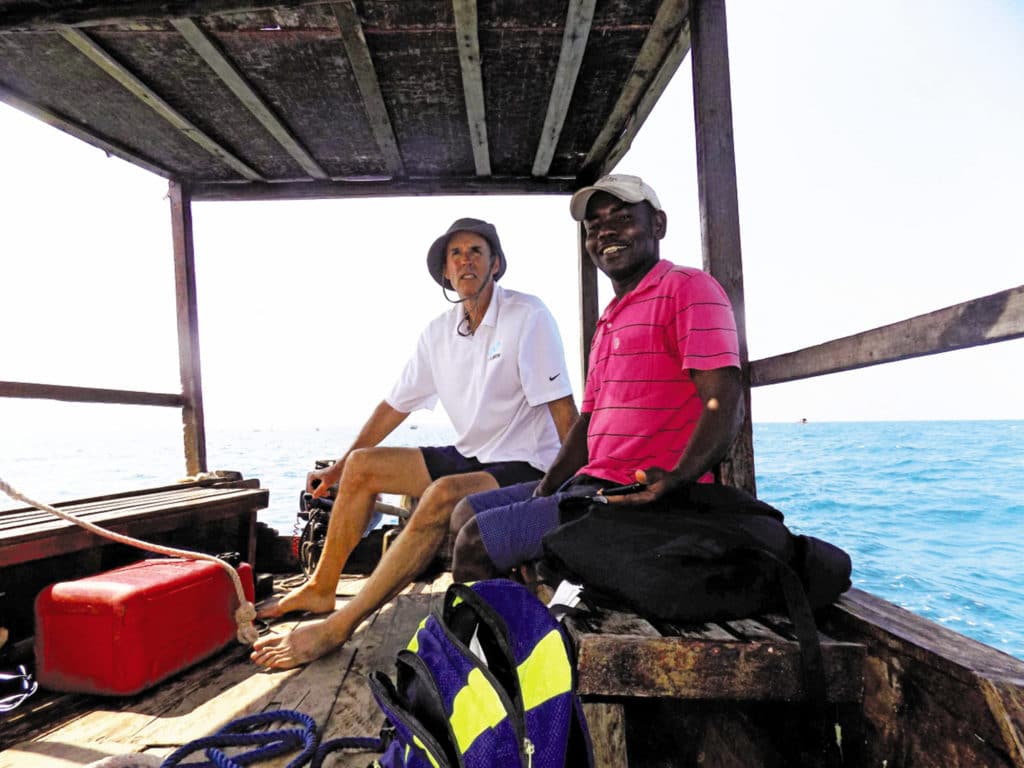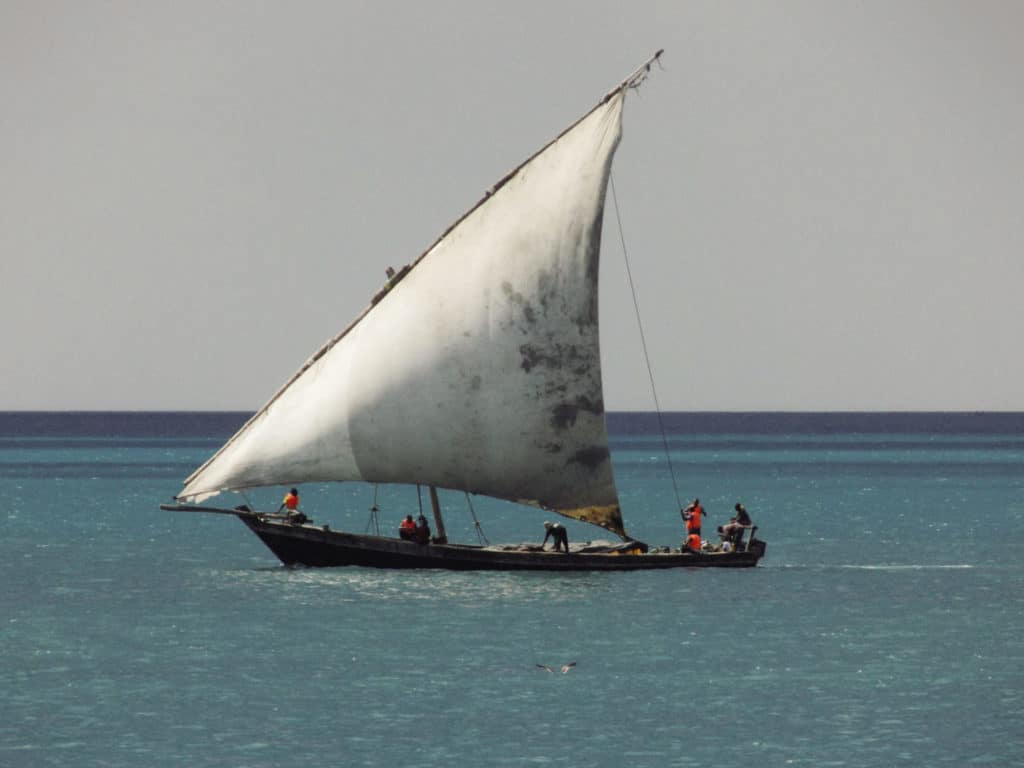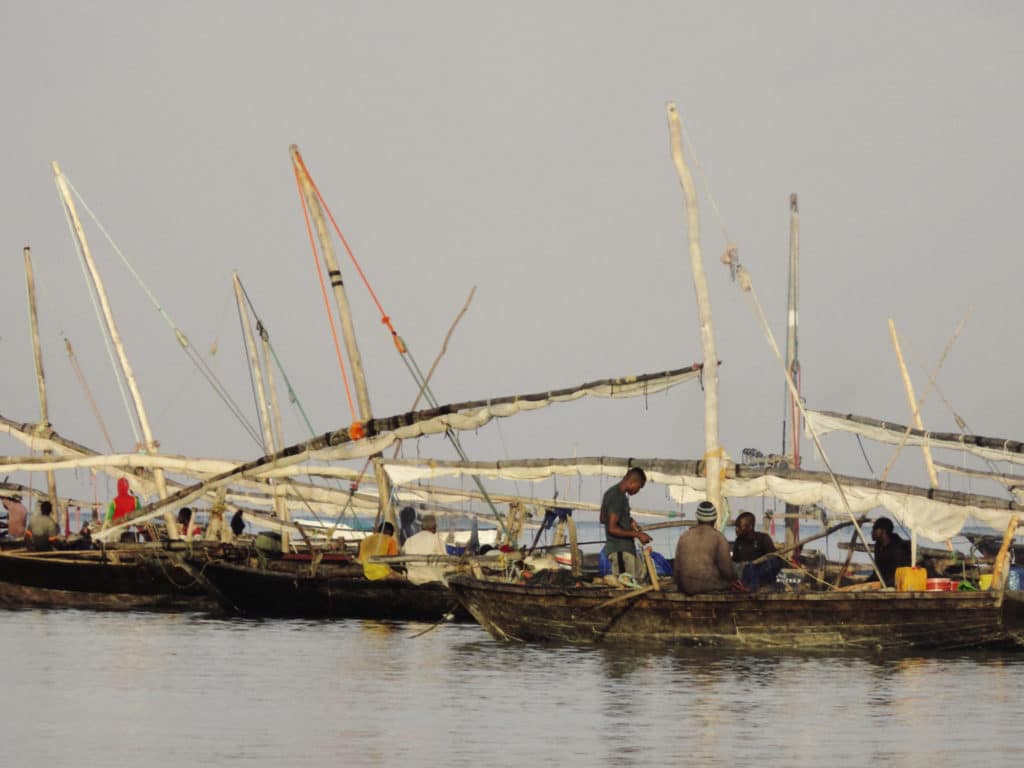
Zanzibar: the very name evokes exotic images of sultans, spices and 18th century explorers. I was traveling in Africa with my brother Dan, and it was time for him to head back to California—but I couldn’t go home without a quick visit to Zanzibar, an archipelago off the coast of Tanzania. I was so close, and I doubted that I would ever sail there aboard my own boat. My guidebook talked about beaches, restaurants, hotels and history, but the photos of the traditional sailing craft were what really hooked me—somehow, I was going to sail a dhow.
The plane landed in the dark, and I was whisked off to a hotel in the heart of Zanzibar City, a crumbling collection of Arab- and Indian-inspired old buildings that remind one of Old Havana. My driver insisted on escorting me all the way to the hotel office; I later learned that this wasn’t because of crime, but rather that there are no street signs. He assumed (correctly) that I would have gotten hopelessly lost in the night.
The many people I met over the next few days on this mostly Muslim island were poor but kind, and delighted to exchange a few words of simple Swahili or English with a clueless foreigner. Jambo, habari? (hello, how are you?) is a great icebreaker.

For close to a millennium, the dhow was the primary mode of transportation for Zanzibaris, providing vital trade and establishing Zanzibar City as the hub of commerce between mainland Africa and the Middle East. The stout craft are constructed of mahogany, teak and whatever else is available; are usually between 30 and 40 feet long, with a draft of around 3 feet; and have a wooden Bimini over a poop deck with a low waist. There is only one small marina on the islands, so visiting yachts are rare and usually anchor out. Most of the dhows anchor offshore and back their sterns to the beach to load cargo and passengers.
I arranged a ride through Eco+Culture Tours, a local company that donates a portion of their profits to community-development initiatives. At the beach the next morning, I was introduced to Capt. Ahmed and his mate, Hafi, who welcomed me aboard Cima, and then they quickly prepared to get underway. Soon the Yamaha fired up, the grapnel was weighed, and we were off.
Once clear of the anchorage, the crew hung the rudder and tiller off the transom, released the ties on the long gaff of the lateen rig, and hit the engine kill switch. We were sailing now! I explained to Ahmed that I’m a sailor from the US, and his eyes lit up. “Would you like to steer the boat?” he asked.

“Yes, sir. I thought you’d never ask!” And he gladly handed over the tiller. It was the end of dry season, the winds were blowing gently from the south, and the boat tracked beautifully, cruising along at about 5 knots.
Most dhows carry only life jackets and an outboard engine. There were no modern navigational instruments, electronics or running lights. Sailing was by line of sight, and the bilge was emptied with a bucket. In short, the boat hasn’t changed much in 1,000 years.
We were bound for Changuu, aka Prison Island, once used as a detention center for rebellious slaves and then as a quarantine station for yellow fever. I enjoyed a sublime half-hour at the helm until it was time to bring her into the wind and drop the hook.
After a quick tour of the island, we were back on board for the return trip. The wind had veered, and I learned of the dhow’s primary shortcoming: the keelless boats don’t sail to weather. I asked Ahmed for a primer on tacking. “It’s much work,” he said, then went through an abstract explanation that I had difficulty grasping as he started up the outboard.
All too soon my time was up. Waiting for the airport taxi in Forodhani Gardens I took a last look out at the harbor and the timeless dhows drifting back and forth, grateful for my time here in this magical place.








